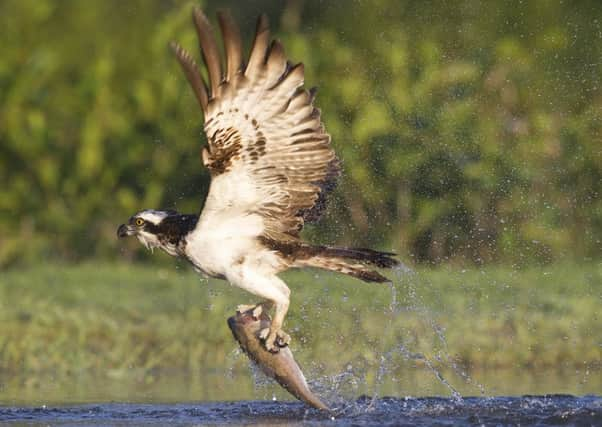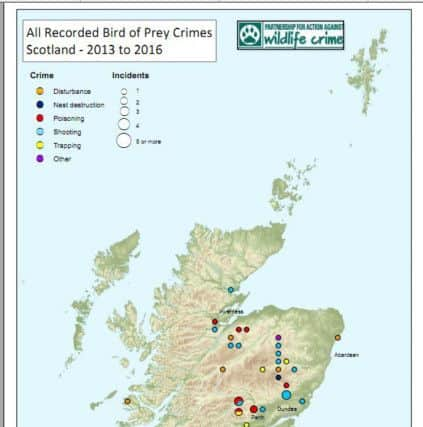Crimes against birds of prey in Scotland down by 26%


There were 23 recorded incidents in 2013 and 18 in 2014.
Gamekeepers and landowners have welcomed the new report, which they say shows “definite evidence of changing attitudes” towards persecution of birds of prey.
There were four recorded incidents of poisoning, four shootings, three cases of disturbance and three trapping or attempted trapping offences last year.


Advertisement
Hide AdAdvertisement
Hide AdSpecies illegally killed included buzzards and a goshawk, while the golden eagle and osprey were victims of disturbance cases.
Confirmed poisoning incidents fell by a third from six in 2015, which is the second lowest number in a single year since PAW Scotland began publishing the maps in 2004.
Deliberate killing by humans is one of the key threats to some birds of prey, including golden eagles, hen harriers and reintroduced red kites.
Most incidents are discovered by chance by hillwalkers in remote parts of the country.


Sporting estates have come under fire for targeting raptor species in order to protect game birds for shooting.
A spokesman for the Scottish Gamekeepers Association said: “No one can change the past and no problem can be sorted overnight but there is definite evidence of changing attitudes regarding crime against wildlife in Scotland.
“This is reflected in the figures and a general downward trend over the past five or so years.
“The SGA does not condone wildlife crime and seeks legal solutions only to solve species conflicts.
Advertisement
Hide AdAdvertisement
Hide Ad“Our membership, the vast majority of whom are wholly law-abiding, are supportive of this stance and respect the clear message it sends.”
Douglas McAdam, chief executive of Scottish Land & Estates, added: “There is still work to do to eradicate this problem, and the evidence points to measures that have been put in place having the desired effect.
“Scotland has one of the toughest legislative regimes around bird of prey crime, some of it introduced quite recently.
“ These figures clearly show that it is playing a significant part in reducing bird of prey crime, even though proposed new penalties for wildlife crime generally are not yet introduced.
“That should help deliver a further fall in raptor crime and needs to be given time to work.
“The land management sector recognises that some of the incidents may have been related to game shooting interests and is committed to keep working to bring those figures down even further in future.”
The Scottish Government has ordered a review of data from satellite-tagged birds of prey in an attempt to shed new light on the disappearance of a number of individuals.
But “there is still much work to be done”, according to environment secretary Roseanna Cunningham.
Advertisement
Hide AdAdvertisement
Hide Ad“So while I welcome these figures today, my message remains clear: the illegal persecution of Scotland’s magnificent birds of prey must end,” she said.
Other animals killed in poisoning incidents over recent years include dogs, cats, ravens and rooks, but there were no cases recorded in 2015 and 2016.